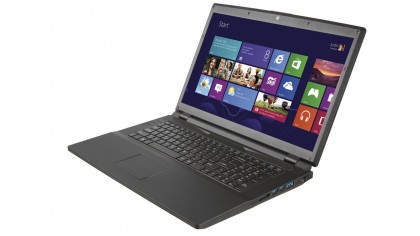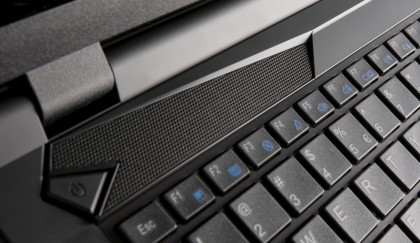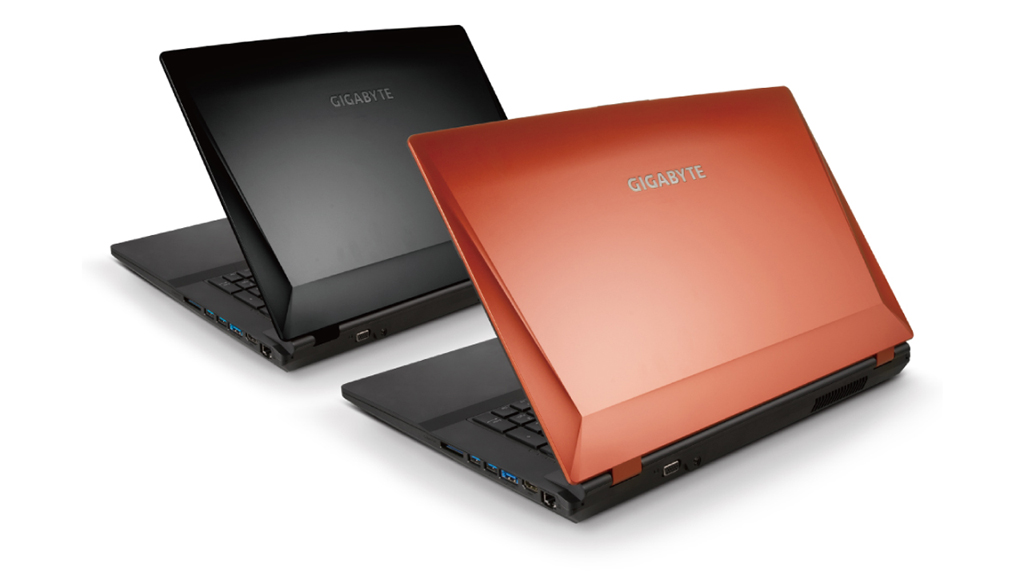Why you can trust TechRadar
Cinebench 11.5 4.7pts
3DMark 1,525pts
Battery Eater 135 minutes
When it comes to CPU performance, the Gigabyte P2742G doesn't serve up any surprises. The Intel Core i7-3630QM is a bit of a beast and there's little to nothing available as an alternative that will subjectively feel much faster in a laptop PC.
That includes Intel's new Haswell CPUs. They're not dramatically quicker. For the record, the 3630QM cranks out 4.7pts in Cinebench 11.5. To get an idea of just what that means, consider that the MSI GX60 with its own quad-core AMD A10 chip isn't even half as fast.
Another strong point is storage performance. The Liteon M3S solid-state drive Gigabyte has gone for isn't one we're familiar with, but it sports the generally well regarded (if slightly elderly) Marvel 9174 controller chipset.

Anyway, our testing spits out sequential read and write performance of 483MB/s and 187MB/s respectively. Not world-beating numbers, admittedly, but miles faster than a conventional magnetic drive would produce.
If anything, that's even more true of the 4K random access read and write performance. For a current SSD, 17MB/s and 30MB/s are merely respectable. But those numbers annihilate the sub-1MB/s performance you can expect from a magnetic drive.
Then there's battery life, which comes in at 135 minutes in Battery Eater. Far from shabby for such a big beast. We also had a look at what you can expect from the battery while streaming web video via Wi-Fi, and the result is around four hours.
That's fairly impressive for such a powerful portable and means battery-powered operation is a genuine, usable feature, not a hypothetical that has you gasping for the mains almost as soon as you power up.
All of which just leaves the most important aspect of all: gaming. That starts with the 17.3-inch HD LCD panel. It may be based on TN technology. But it's still a decent panel. There's none of the washed-out and feeble appearance that the worst laptop screens still suffer from.
The viewing angles betray some pretty obvious colour inversion. But the basics, including contrast and colour saturation, are good. It's a nippy panel, too. All in, it's a nice choice for gaming.

We only wish we could say the same thing for the Nvidia GTX 660M graphics chip. If that seems an odd thing to say about a dedicated GPU designed for gaming, the problem involves expectations.
Gigabyte unapologetically pitches the P2742G as a high-end gaming laptop. And the simple fact is that the 660M does not deliver high-end gaming performance. Crank up the details and anti-aliasing on a mainstream game like Dirt 3, and the result is occasionally choppy frame rates.
Try something really demanding like Metro 2033 and things get really ugly. You'll be barely into double-digit frame rates at high detail and anti-aliasing settings running native resolution.
As for the more physical aspects of the Gigabyte P2742G's bearing, two things are worth noting. Firstly, it's big and heavy. Over three kilogrammes heavy to be precise. Portability isn't a strong point.
Finally, the keyboard merits some praise. It includes a number pad and has a really nice, firm base. It's lovely to type on.
Technology and cars. Increasingly the twain shall meet. Which is handy, because Jeremy (Twitter) is addicted to both. Long-time tech journalist, former editor of iCar magazine and incumbent car guru for T3 magazine, Jeremy reckons in-car technology is about to go thermonuclear. No, not exploding cars. That would be silly. And dangerous. But rather an explosive period of unprecedented innovation. Enjoy the ride.
